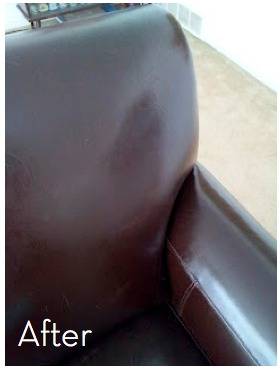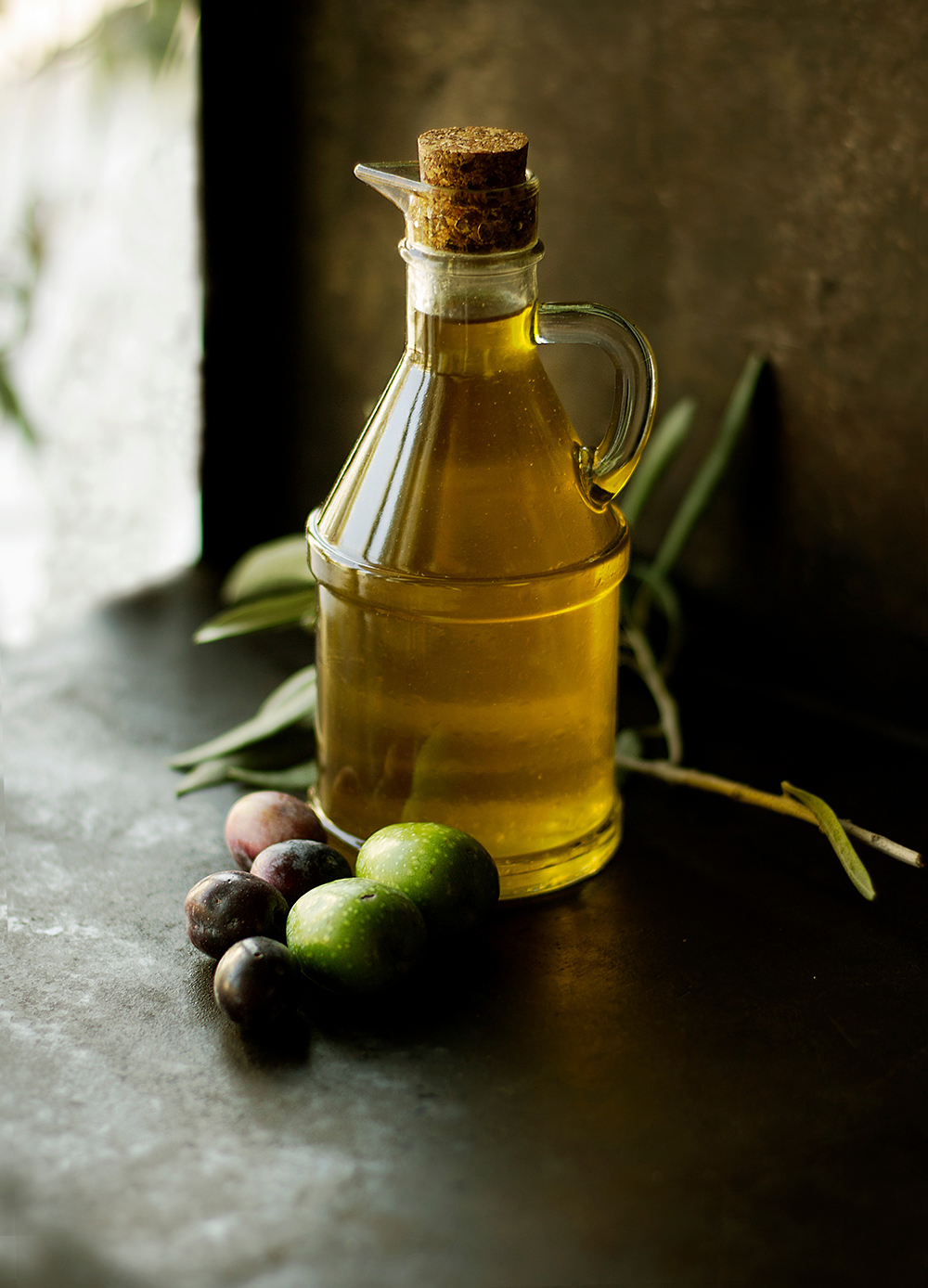There are a handful of substances that are darlings for us DIYers on the Internet—natural, ubiquitous, and amazing multi-taskers. You know what I’m talking about—baking soda, vinegar, kosher salt olive oil, coconut oil, etc. They can do anything we ask them to do: clean our homes, whiten our laundry, reduce blood pressure, pick up the kids from school…
One such popular cure-all life hack is how to fix scratched leather using that lovely golden Mediterranean export, olive oil. But does it really remove scratches from leather?


(Source: Mash Up Chic)
It’s tauted as a quick, easy, and inexpensive way to cover the offending scratches. However, before we grab the EVOO, we wanted to hear from leather experts on this tip. So here’s the question: Should we use olive oil to hide scratches in our leather furniture or should we save it for our bruschetta?

Short-term: Yes, but…
Let’s step over to the beauty products aisle and have a quick conversation about leather.
Though it’s a bit of a macabre reminder, all leather was once a working organ: the skin of a moving, breathing animal. It operates in the same way as your skin: your pores are little gateways that allow 1) your sweat glands to produce water to keep you from overheating like a Honda on a triple-digit day in July, and 2) your sebaceous glands to produce oil that protects your skin by providing a barrier to lock in the right amount of moisture and lock out any excess. (Obviously, it doesn’t always work: too little sebum and you need lotion, too much and you need acne treatment.)

Now, let’s apply this to leather scratch repair. Remember from the beauty aisle that leather is porous, so it absorbs liquid. Water can seep through leather pores and saturate it—any time you’ve ever worn your leather shoes in the rain, you can attest to this!—but by then it’s displaced the natural oils found between leather’s fibers, and as the water evaporates, it leaves the fibers stripped of those oils.
Loss of natural oils = loss of natural flexibility = cracked, flaky leather.
So, rubbing a light application of olive oil on a leather couch, car seat, purse, or shoe is replacing the oil that water—in the form of spills, splashes, or simply humidity—has stripped away. Right?
Well…
Long-term: …it’s probably not the answer for how to fix scratched leather furniture
… leather experts still recommend against it.
Full disclosure: as far as I can tell, Fibrenew, a Toronto-based mobile leather care franchise that’s been around since the 80’s, is the sole source of Internet-based warnings against using straight-up oil for how to fix scratched leather. If you have another source, please leave the link in the comments below! This goes against the grain (see what I did there?) of what we DIYers tend to recommend en masse.
If you read further, though, their reasoning is sound. Let’s say you decide to fix scratches on a leather couch by rubbing it down with olive oil. It looks a lot better, right? Just for now. That oil isn’t going to stay on the surface of the leather, but instead will keep on traveling through the rest of the leather to the back. Then, as the leather surface begins to dry out again, the oil returns to the front, especially in the places that are more worn.
In other words:splotchy oil patches.
Let’s return back to our beauty aisle chat. Sebum, that oily substance that your skin, is composed of roughly 75% liquid fats and 25% waxes. It’s been specially formulated for your skin—not too oily, not too waxy, not too wet. Just right, Goldilocks-style. Your leather couch is no different: it doesn’t just need any old oil, but a blend of liquid fats and waxes formulated specially to nourish its fibers and help lock in the right amount of moisture to stay flexible.
(Not to mention, cooking oils are designed to get broken down, i.e. digested. When left exposed to air, light, water, and time, they do go rancid. You wouldn’t expect to leave a salad sitting out for months, would you?)

The better alternative on how to fix scratched leather
The ideal solution for how to get scratches out of leather? Stick with a specially formulated leather care product to nourish the fibers of your leather goods, to clean their surfaces, and to repel damaging water.
Don’t think that you have to abandon your all-natural ideals, though! These two leather conditioner/cleaner combos rank consistently well on blog and Amazon reviews, and they’re both all-natural and made in the USA.


If you’re going to be doing regular leather maintenance—which you should, if you’ve made a significant investment in a nice leather chair or pair of shoes—pick yourself up a good leather care brush.

The person that suggested that was saying something that worked for them. Why should they have asked an expert first..give me a break ..you are taking this blog way to serious
Did not work on my ivory colored leather sectional 🙁